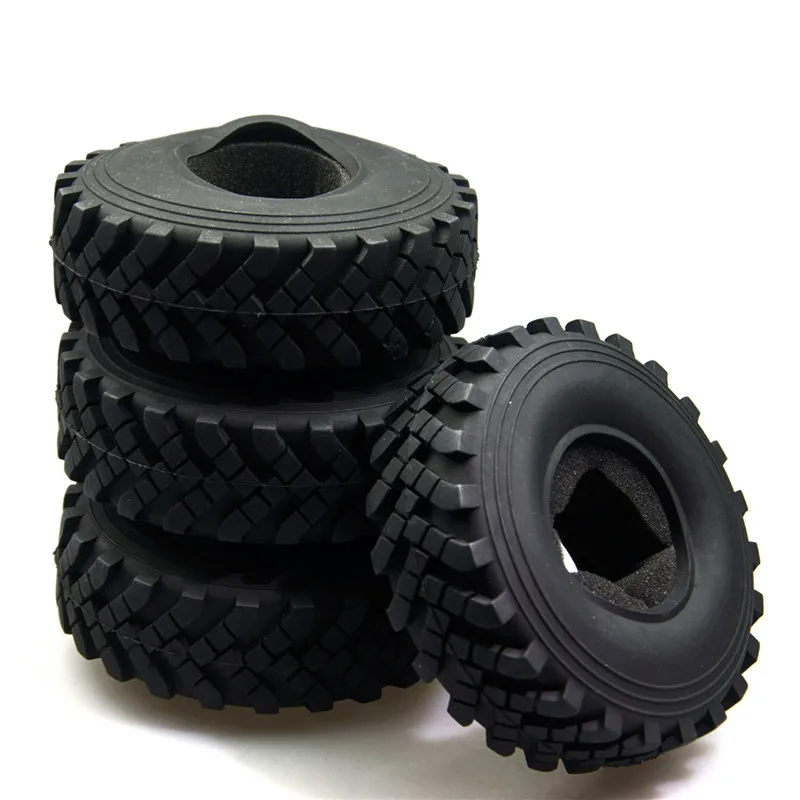RC tires should be relatively soft. But that is just not always the case, now, is it?
If you are here, you are probably having the same problem. Luckily, there are a few ways you can soften up RC tires.
How to soften RC car tires? To soften RC tires use WD-40 or Liquid Wrench (LW). Soaking RC car tires in LW or WD-40 has been proven to soften up RC tires. All you have to do to soften RC tires is; (1) spray them with LW or WD-40 and (2) leave them to soak in it for about 2 to 48 hours.
Me holding a wheel from my Traxxas SlashAfter doing my research on this topic, I have come up with some interesting information. If you are curious to find out more, continue reading below.
See the best selection of products for RC tires from Amazon by clicking here
How to Make RC Tires SofterGenerally speaking, there are four fundamental steps that you need to follow in order to make RC tires softer.
Apply generous amounts of the product of your product of choice to the tire. I recommend using Liquid Wrench lubricating oil (the blue can) or WD-40 for the best results.
2. Put the RC Tires in a Plastic BagTake a few ziplocked plastic bags.
I like to put each tire in a separate bag so that I can be sure that each tire gets properly covered in the product.
Spay generous amounts of the compound in the bag as well.
Press gently on the plastic bag to get most of the air out and close the ziplock. Leave the tires to soak.
3. Leave the RC Tires to Soak in the Solution of ChoiceThe amount of time you will need to leave the tires to soak in the compound will vary depending on three different factors, (1) the ambient temperature, (2) the type of the tire, and (3) the type of compound used.
Some products may be very aggressive, while others may need a lot of time to start working. I will talk about this in a bit.
I will talk about this in a bit.
And if you are using a WD-40 or LW, you may need to leave the tires to soak overnight or up to two days to soften the tires up properly.
4. When the Desired Level of Softness Is Reached Remove and Wash the RC TiresKeep an eye on the tires. Check them every few hours and give them a little squeeze to see how soft they are. When they reach the desired level of softness, remove them from the plastic bag, and thoroughly wash them. (In fact, you can use Simple Green to wash away the WD-40 and stop the softening process.)
Make sure that all tires are left to soak for the same amount of time. This will ensure that all tires have the same level of softness.
As you can see, softening up an RC tire is not very hard, you really don’t need any special skills or experience. However, choosing the right product is a different matter. Below you will see the most commonly recommended chemical compounds and solution and how effective they are at softening tires.
Both Liquid Wrench (LW) and WD-40 are some of the most efficient products used by the majority of people.
WD-40 is a simple product that has a lot of different uses. Basically, this is a water-displacing (hence the WD in the name) spray. It is used for lubrication, water and moisture displacement, removal, and displacement.
Best of all, it is considered safe for almost all types of materials, including rubber. This means that the WD-40 can be used on RC tires as well, and as a matter of fact, it didn’t take too long before it turned into one of the most often used and recommended products for RC tire softening.
This is the most effective, affordable, and available way to soften stiff RC tires.
There are no signs of damage, deformation, or excessive wearing out of the tires as a result of using the WD-40 on them. They become softer and more grippy, too.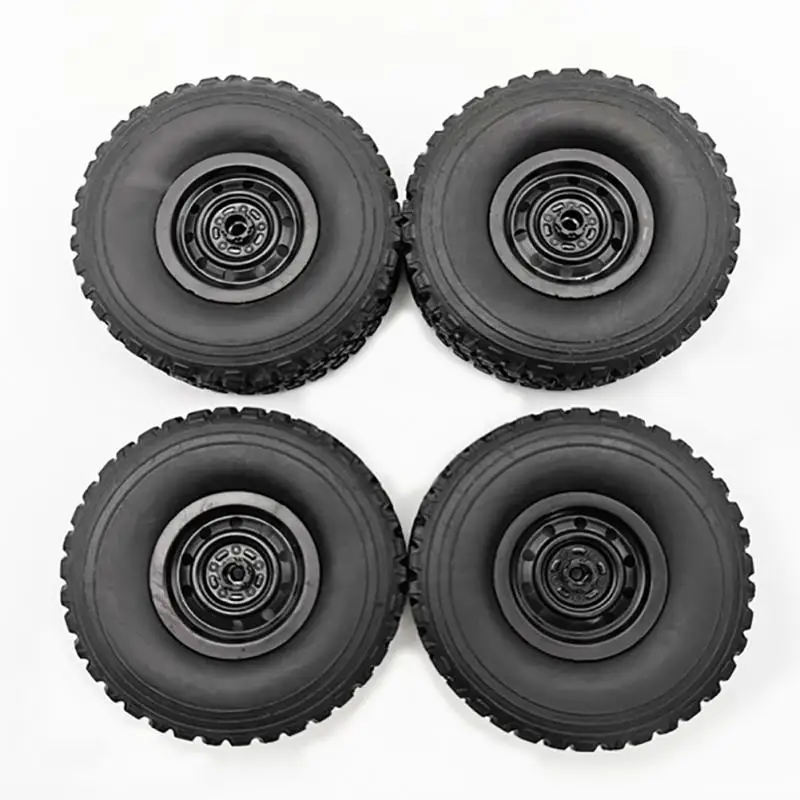
The only downside to WD-40 and other oil-based compounds is that they may leave a nasty mess on the track.
Another thing worth pointing out is that you need to keep an eye on the tires and not leave them to soak in the WD-40 for too long (not more than two days). Some tires will start to swell if left in the WD-40 for too long.
LW has the same qualities and characteristics as the WD-40, and in fact, it is slightly more preferred by the majority of racers.
You can’t go wrong with both the LW and the WD-40. They can be found online on Amazon, Home Depot, bike shops, and other similar places.
Hot LapThere are different tire treatment products that are designed to improve the life expectancy and the durability of RC tires.
Hot Lap is a product used by many people. It is designed for full-scale cars and tires and will usually come in larger quantities, which could end up being more expensive than necessary.
However, it can work wonders on rubber tires as it can also be used for softening up the rubber. Hot Lap products are one of the very few products intended to affect the softness of the tire directly and not just increase its stickiness like other products. (Part of the reason why it is frequently applied on both the inside and outside of the tire.)
Hot Lap products are one of the very few products intended to affect the softness of the tire directly and not just increase its stickiness like other products. (Part of the reason why it is frequently applied on both the inside and outside of the tire.)
Check Hot Laps price on Amazon here
Hand MassageThis is probably the best completely free way to soften up RC tires. You do not have to buy anything or use any type of product or gadget. All you need is some time, a strong pair of hands and a little elbow grease.
I know how it sounds, but let me explain.
Massaging the RC tire will help loosen up the rubber. The only downside is that it takes time.
You need to take each tire off the wheel and massage it for about 2 hours or so.
There is no particular method or technique for doing this. You can turn it inside out, bend every part of it, squish it, pull it apart, or squeeze it vigorously.
After a while, you will notice that the rubber starts to loosen up and soften.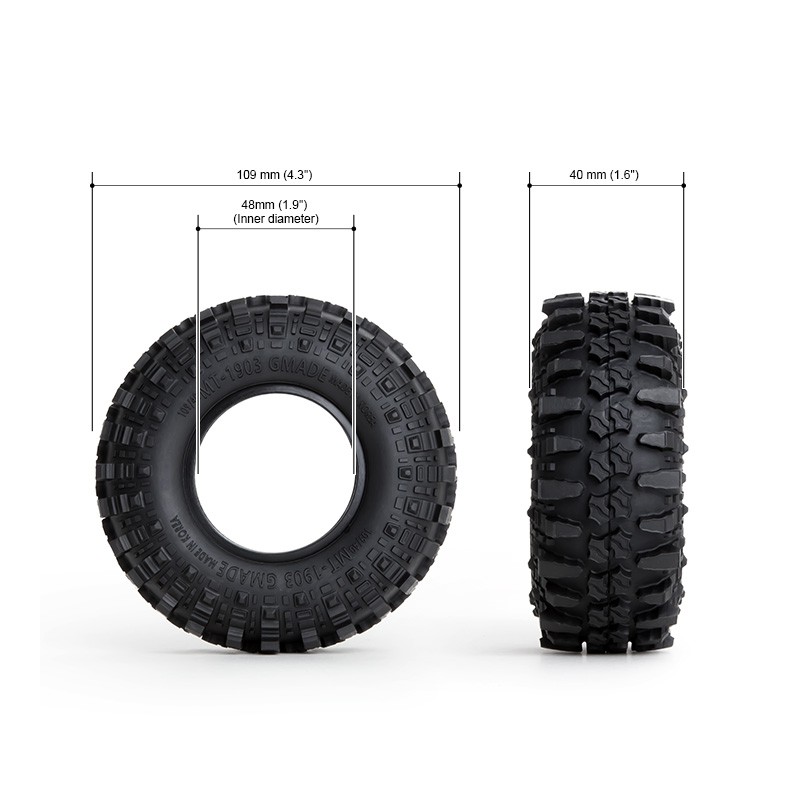
Overall this can turn into a good hand and wrist workout, but it is definitely an effective and clean way to soften up rubber RC tires. Best of all, it is completely free, and the results are excellent.
Simple GreenSome people are recommending using multipurpose degreasers, which work like the above-mentioned WD-40 and LW.
If you are looking for ways to soften up RC tires, you are guaranteed you will be recommended Simple Green at least once.
It can be found in Home Depot and other similar stores, including online, too.
You can check Simple Greens price on Amazon by clicking here
Simple Green is a very powerful degreaser and cleaner. It is intended as a good eco-friendly alternative to many other products with a similar function. (In fact, it is even considered orally non-toxic.)
It is designed for cleaning countertops, different types of fabric, carpets, flooring, and even vehicles and electronic gadgets. It will remove dirt, grease, and any stains.
So far, so good, but how does it perform when it comes to softening up RC tires?
Simple Green does not seem to be nearly as effective at softening up RC tires as the WD-40 is.
Related post: Is This Why RC Tires Are So Expensive?
Results seem to vary depending on the type of rubber but are questionable. For the best results with Simple Green, you would need to soak the tires in a Simple Green bath for at least a day or so.
Conversely, Simple Green is better at conditioning the tires—not softening them—so it is an excellent product to use on tires that have already been softened up.
Buggy Grip 1 & 2Using a traction compound is a great way to make the tires of your RC car stickier.
Traction compounds like the Trinity Buggy Grip or Buggy Grip 2 are one of the frequently recommended products for softening RC tires.
PB BlasterPB is frequently overlooked, but some people in the community do use it to soften up their tires.
It works the same way WD-40 or the LW does. It is applied and used the same way, and the results are usually satisfactory—not the best but not the worst either.
Click here to see price from Amazon.
VHTVHT is another popular product that many racers use to soften stiff RC tires.
It works well, and it is a time-tested product. Although, it doesn’t exactly soften the rubber but adds a good amount of stickiness to it.
See a range of VHT products here
What Products and Methods You Should Not Use to Soften RC Tires?A close up of my Traxxas SlashThere are a few other methods and products that people sometimes recommend; however, these, while effective, may do more harm than good.
Diesel FuelDiesel fuel is another old trick that RC racers have up their sleeve.
Diesel fuel is very effective at softening up hard RC tires. However, diesel fuel is not allowed in most places because it will contaminate the soil and dirt, making it stickier and slippier.
A good way to, kind of, negate that is to apply diesel fuel to the tire using a simple brush, letting it soak for an hour or so and thoroughly cleaning the tire with Simple Green in order to remove the diesel fuel as much as possible.
The good news is that it takes less than an hour—and sometimes just a few minutes—to see good results.
If you leave the tire to soak in diesel for a really long time—24+ hours—you can, in theory, completely destroy the tire as the fuel will be gradually eating away from the rubber.
Some racers even like to mix diesel fuel with WD-40 or other traction compounds for a combined effect. It is true, these methods do work, but as mentioned, they will leave a mess on the racing track, which is definitely something that you want to avoid. Diesel fuel being illegal will usually mean it is a no go.
And while we are on the subject of fuel, it may be worth mentioning that naphtha is also known for its rubber dissolving and softening capabilities. However, it should not be used as it may damage the tires too much.
However, it should not be used as it may damage the tires too much.
Turpentine is a solvent that is obtained from the distillation of tree resin. Turpentine is very effective at softening rubber RC tires, but there is one caveat.
You have to be very careful as to how long you will be soaking the tires as turpentine can make them get bigger.
Usually, 3 to 5 minutes is considered safe. Leaving the tires to soak in turpentine more can really affect their size. (Also turpentine has a very strong smell.)
Related post: RC Tires Cracking: Everything You Need To Know
Lacquer Thinners, Acetone, and Paint RemoversAlthough acetone, paint thinners, and lacquer thinners can be used to soften up rubber tires, they will also be very detrimental to the rubber. Initially, they may soften the tires, but eventually, they could speed up the wearing out of the tire and even harden it up as they will pull out the natural oils found in the rubber (especially acetone).
Lacquer thinner, in particular, has one distinct problem that not a lot of people may realize. The chemicals found in the lacquer thinners can vary drastically between the different brands. So it may be hard to find a good thinner. And not all thinners will affect the tires the same way.
Paint removers work in a similar way and can be effective at making hard RC tires a little softer—especially removers that contain NMP (N-Methyl-2-Pyrrolidone) and toluene or toluol. However, paint removers may frequently be way too aggressive on the rubber.
BoilingI have been told a few times that boiling can be used to soften RC tires.
I have done a few experiments on older and stiffer RC tires, and I have to say that the reality of things is that boiling is not very, if at all, effective in softening up an RC tire. The odds are that you will damage both the rims and the tires. Boiling will sometimes even deform the rims, it can damage the finishing, and it will likely damage the foam inserts, too.
Overall, I consider this to be a dangerous and risky way to soften your tires with zero to no effect.
BakingAnother very method that may be brought up is baking the tire.
However, people bake RC tires to unglue them.
I am sure you don’t need me to tell you how dangerous this can be for your tire and wheels. Usually, some guides recommend placing the tires in a preheated oven of anywhere between 300 to 500°F. In fact, some people report having baked tires explode when used at high throttle.
Baking is ineffective and dangerous, and there is a greater risk of damaging and destroying the tires. There are also better ways to unglue tires—if anything baking will make the tires significantly harder.
Should Your RC Tires Be Soft?The tires of an RC car should be fairly soft. Soft RC tires improve the traction and grip of the tires, which adds better maneuverability and control.
However, the only downside with soft tires is that they are predisposed to wearing out faster. This may be especially true to hard rubber tires that have been softened up with more aggressive chemicals and solutions.
This may be especially true to hard rubber tires that have been softened up with more aggressive chemicals and solutions.
Many of these solutions soften up rubber by essentially breaking it down ever so slightly.
Can RC Tires Be Too Soft?Although hard RC cart tires are undesirable, there also occasions where they can also be considered too soft. So yes, your RC tires can be too soft as well.
If you can squeeze your RC vehicle’s tires using your two fingers without putting in any pressure or effort into doing so, the chances are your RC car tires are too soft.
An RC tire that is too soft may easily come off the wheel when you give it more gas, in which case it should definitely be glued to the wheel. You will be lucky if you get more than three races with very soft tires, usually medium is your best choice.
Do All RC Tires Need to Be Softened Up?There is a wide variety of different RC cars and RC tires as well.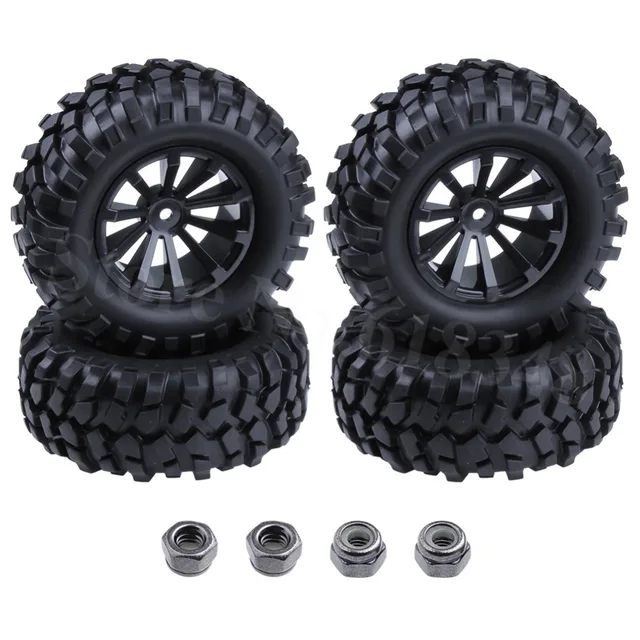 The quality and hardness or softness of the tires will vary drastically across the whole board.
The quality and hardness or softness of the tires will vary drastically across the whole board.
Interestingly enough, some ready-to-run models often come with tires that are very hard compared to some kit models.
Whether you want to have your RC tires softer or not will depend mainly on where you will be racing your RC car.
There are definitely some upsides and downsides to having stiffer or softer RC tires, and you should consider those before going ahead and softening the RC tires.
Lastly, I want to call your attention to the fact that you will be, potentially, using chemicals and products that can be considered a health hazard if misused. Exercise extra caution if, and when, using them.
I hope that you found this article helpful. Here are some more RC tire related articles that may be of interest;
*This post may contain affiliate links. As an Amazon Associate we earn from qualifying purchases.
As an Amazon Associate we earn from qualifying purchases.
There is a lot of information to know and learn in the world of RC cars. It is a fascinating hobby to partake in. Whether you are driving them for fun or racing them for sport, one of the questions you might have is how to make the hard tires softer and more pliable.
How do you soften RC car tires that are too hard? If the tires are too hard, you can apply one of several chemicals to make the tires stickier, which amplifies their grip and softens the tire. When your tires are too hard, there is little to no traction. When racing RC cars, the softer and stickier the tire the better the car maneuvers.
The research on softening RC tires is mostly from personal experience and collected suggestions of avid RC car racers. Many racers refer to these compounds used on their RC tires as “tire sauce.” Always use caution when using any of these techniques to soften your RC tires.
If you need to get new RC tires you can find them by clicking here.
A good RC car doesn’t have to cost a fortune. This 1/16 scale model is 4WD and can reach a top speed of almost 30 MPH!
With speeds like that and 4WD you can take this RC car almost anywhere!
Click Here To See The Current Price
Softening RC Car TiresThere are several ways that you can experiment with to soften the tires of your RC car. I will share with you the ways I have seen most used in the RC car community and the ones that have the greatest likelihood of success, and in firsthand experiences that have been relayed by RC car users themselves.
WD-40One of the few ways that have been stated to soften up RC tires is to use WD-40. It is a very common lubricant used for basically anything that need lubrication.
First you should spray the tired down completely with WD-40 and let them dry for about an hour just before you intend on using your RC car.
WD-40 should make your tires more pliable and give them more traction.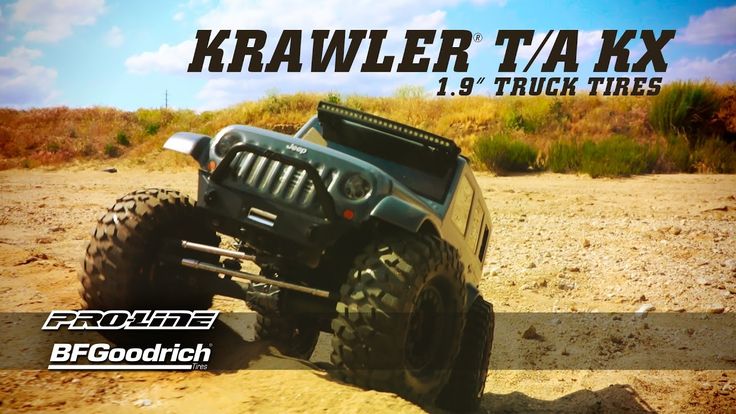 It will also keep mud from sticking to them as well.
It will also keep mud from sticking to them as well.
To expedite and enhance the process: You may choose to wrap them in plastic wrap or put them in a zip lock bag so that the chemicals evaporate slower and get absorbed into the tire. You may also set them in the sun to warm up the rubber of the tire as the chemicals are being absorbed and evaporated.
WD-40 is definitely my favorite for enhancing traction on RC car tires. Please be sure to keep in mind that applying any chemical to your tire may have an adverse effect. You may want to test it on one or two tires first before applying it to all of your tires to see what happens. Worst case scenario, you are replacing one tires instead of four.
Simple GreenSimple Green seems to be one of the most popular ways that people use to soften their RC tires. This doesn’t really soften them, though. It just cleans the oil off of them and makes them stickier.
You may choose to spray down your tires with Simple Green or to soak them overnight.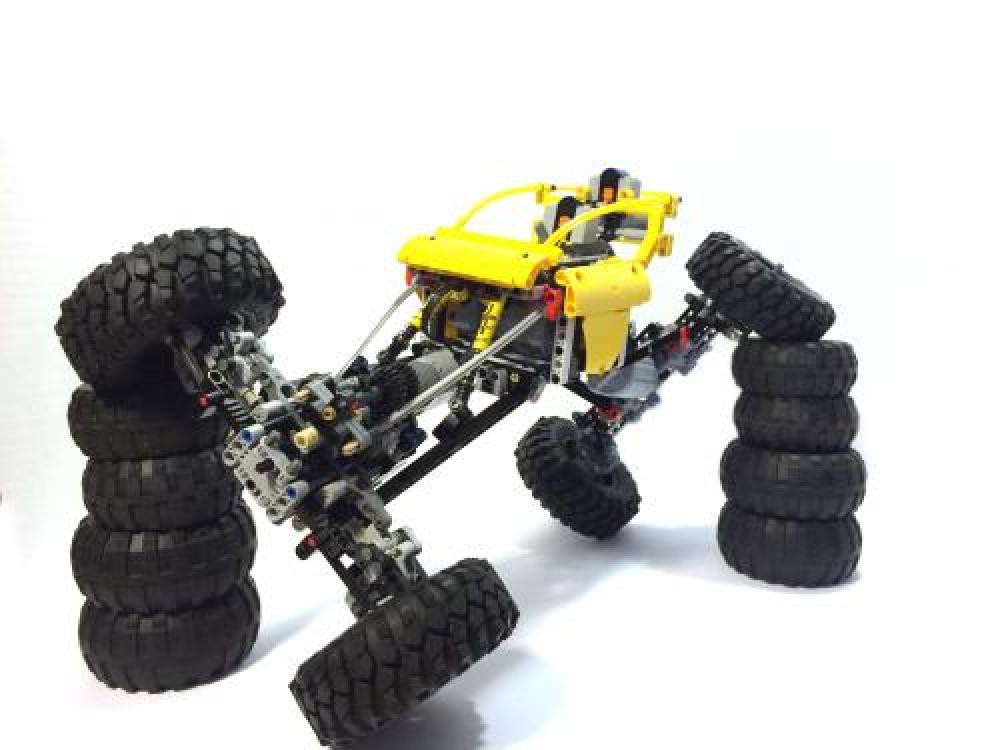 If you soak them, it is advised to use a 50/50 solution with water so that they are not too tacky.
If you soak them, it is advised to use a 50/50 solution with water so that they are not too tacky.
A common tip is to use a toothbrush over the tires to really soak in the Simple Green into the pores of the tires. They will need several hours to dry. It is up to you if you want to rinse them off or wipe them down after you are finished.
Liquid WrenchAn alternative to WD-40 that has been used over the years with great success is Liquid Wrench Lubricant Spray, specifically the blue can. It is a bit of better value by volume for the price compared to WD-40, but otherwise very similar in the results.
You may use Liquid Wrench on your tires immediately (30 minutes) prior to using your RC car. It is not recommended to let sit overnight or to soak them in this product though.
You may mix this with equal parts non-chlorine brake cleaner if you’d like for it to dry quicker.
PB BlasterPB Blaster is a less often used variant in the community, but it works similarly to both WD-40 and Liquid Wrench.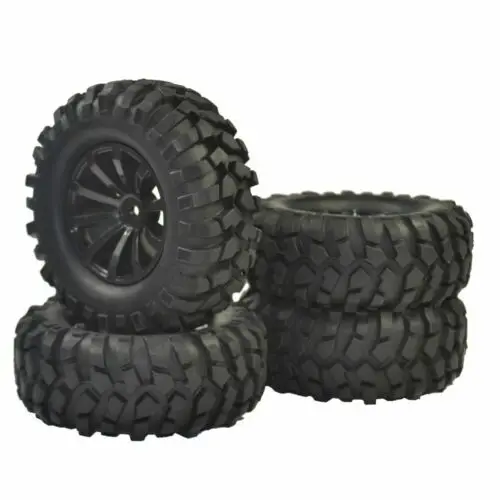
You can apply by spraying on and using a toothbrush to scrub and help the chemicals to penetrate the rubber.
Tips for Applying Tire-Softening Lubricants to Your RC Car
I have already mentioned a few tips about how to better apply your chosen “tire sauce” to your tires, including:
· Use a toothbrush to help rub in and distribute whatever chemicals you decide to use on your tires better.
· Wrap the car in plastic wrap or put it in a plastic bag to help the chemicals soak into the tires more efficiently.
· Use equal parts brake cleaner to whatever agent you choose to use to help the tires to dry quicker.
· Leave them in the sun to warm up the rubber, which will enhance the absorption rate.
Avoiding Waste During Lubricant ApplicationA tip for avoiding the waste of overspray is to empty your chosen compound into a pressure release applicator, like an empty bingo stamper or a small detergent-releasing dishwasher sponge.
If you use these methods to apply to the tires it will coat them completely and will not waste any of the product or products you are using. If you choose not to use these methods of application, you will have overspray as well as sometimes just a mess of the liquid dripping down the tires and all over everything.
If you don’t have an applicator like this handy, you may drip the liquid onto the tires rather than using the spray.
Precautions When Softening Your RC Car TiresThere are some precautions you need to be aware of as you dive into the world of RC cars and softening their tires.
Trial and ErrorYou might want to try a few different techniques to see what works best for your set of RC tires and the terrain you’re working with. If the tires are too soft they might end up being too sticky, and pick up every bit of dirt and rock along the way.
In this case, the best thing to do is to make sure they are clean and dry.
There are dangers in working with any potentially harmful chemicals, so be sure that you are always working in a well ventilated area and wear gloves when necessary.
Be sure to clean up your workspace diligently when you are finished. Always keep chemicals out of reach from children and follow the manufacturer’s guidelines on storing and disposal of each chemical.
Also, be careful about that overspray. Lubricants make things slippery – they’ll make your floor slick, too.
Tire BreakdownIf you implement these tricks too often, you might end up wearing down your tire and breaking them down more than desired. Try to only do these things just before using your RC car, and if that is very often, maybe try alternating and giving the tires a break between uses.
Alternatively, if you soak the tires for too long in certain chemicals, the tires might swell and be unusable indefinitely.
Want to learn the “best method” (at least according to hybrid)? Check out the video below.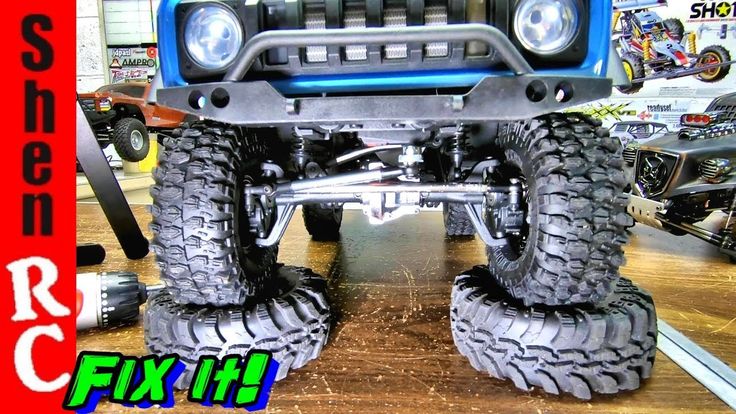
" frameborder="0" allow="accelerometer; encrypted-media; gyroscope; picture-in-picture" allowfullscreen title="A5xY5UMSbeY" loading="lazy" src="//www.youtube-nocookie.com/embed/A5xY5UMSbeY?feature=oembed&controls=1&autoplay=1&enablejsapi=1&rel=1" >
ConclusionWhen you are consistently using RC cars, whether it be for fun or for racing, you will always want to take good care of the tires and do everything you possibly can to get the most out of your time using them.
Your results may vary due to the track materials that you are running your RC car on and also dependant upon what materials your tires are made out of and which type of RC car that you are operating with.
It might take a few tries with a few different items or “sauces,” but you should be able to figure out in no time what works for you and your RC car tires in making them the softest and most sticky and pliable for your circumstances.
Tires and caterpillars were invented in the 19th century and are used as running gear on vehicles to this day. Systems have both undeniable advantages and disadvantages. Designers are constantly upgrading both tires and tracks, trying to meet the requirements of the time and the user, but so far no one has reached perfection. If we talk about the construction equipment market, now there are samples of machines on both types of propulsion, and the buyers face the question: which is more rational and efficient - tracks and wheels?
When choosing, in most cases, the operating conditions, as well as the tasks facing the equipment, play a role. Thus, tracked vehicles are suitable for movement on weak bearing surfaces, for example, on mud or snow cover, due to the increased contact area with the ground and, as a result, less pressure is exerted on it.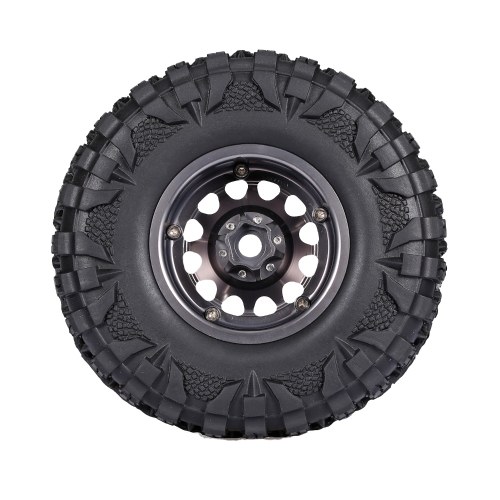 At the same time, wheeled vehicles feel less confident on weak soils, and if they get stuck, they need to be towed by tracked vehicles.
At the same time, wheeled vehicles feel less confident on weak soils, and if they get stuck, they need to be towed by tracked vehicles.
The cross-country performance makes the tracks a rational undercarriage option for earthmoving machinery. If you need to move at higher speeds and also provide traction, which is important when working on slopes, it is more appropriate to install narrow tracks. If the equipment is to be operated on soft soils, wide tracks will be a rational choice. To guarantee the protection of damage when working on sites strewn with fragments of concrete and construction debris, it helps to equip the equipment with thickened reinforced tracks.
Rubber tracks are the solution for landscaping, landscaping and agriculture because they prevent damage to delicate surfaces.
Manufacturers offer various types of rubber tracks with guide vanes of various designs. When choosing tracks, it is important to focus on the design of a particular vehicle. So, some types of equipment can be equipped with tapes of different widths. In general, there are rubber tracks with a continuous annular steel cord (CSC), as well as with connected cord steel cables, which are characterized by a 40% increased strength. Manufacturers also offer rubber tracks with non-metallic cord (NMC) installed on oversized equipment.
In general, there are rubber tracks with a continuous annular steel cord (CSC), as well as with connected cord steel cables, which are characterized by a 40% increased strength. Manufacturers also offer rubber tracks with non-metallic cord (NMC) installed on oversized equipment.
Special purpose undercarriage manufacturer CAMSO offers high strength tracks and tires. The CAMSO CTL HXD model is a rubber-metal track made using a patented technology from a new generation rubber compound. The undercarriage features solid high-strength steel cables and a special tread pattern guarantees the best traction over the life of the undercarriage.
Also in demand among consumers are tracks from the European manufacturer Total Source, which are a combination of high quality and competitive prices. These rubber-metal tracks are characterized by increased wear resistance with a long service life, improved traction on any type of surface, as well as minimal ground pressure. Also, thanks to the increased strength and flexibility, the need for constant adjustment is eliminated.
Trelleborg Corporation offers heavy-duty premium rubber tracks designed specifically for heavy-duty applications. Model CRT-800 with dimensions 180x60x40 and weighing 22 kg is made of a special rubber compound resistant to mechanical damage. Forged metal parts, which are stronger than cast iron parts used by some other manufacturers, also increase the reliability of the tracks. Solid brass coated cables that resist moisture reduce the need to adjust track tension and prevent tracks from deforming during travel. Grooves in the track ridges help reduce roller vibration, increase machine smoothness, and increase track ridge strength. Thanks to these design solutions, the operational life of the caterpillar is doubled, and the manufacturer's warranty period is 2500 m/h.
Proper machine operation and maintenance will not only increase the life of your tracks, but also reduce your operating and total cost of ownership.
Return to the list
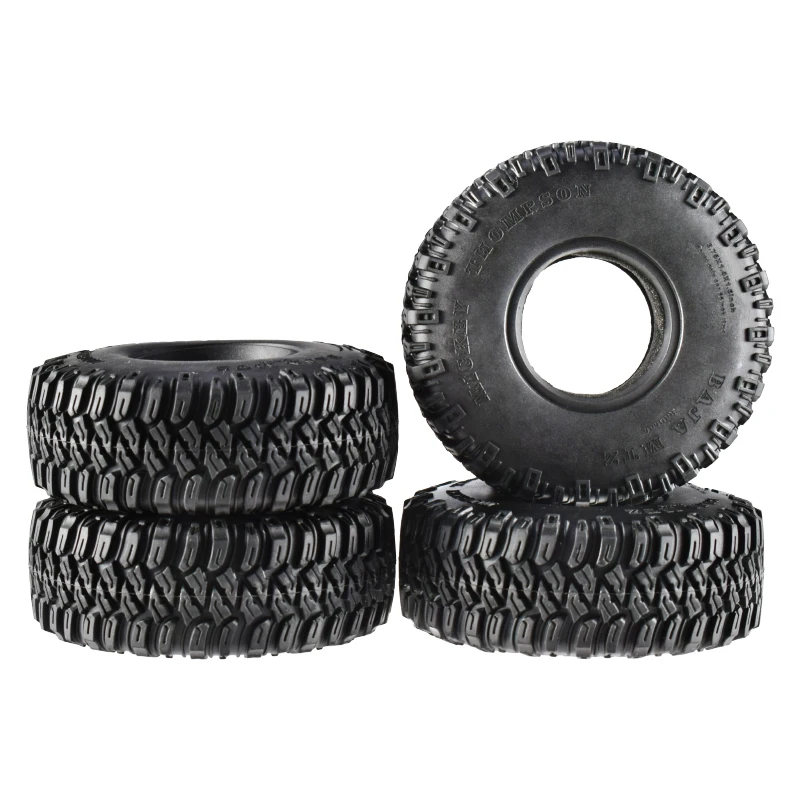
The popularity of caterpillar vehicles among domestic users is so great that many home craftsmen independently "change shoes" of their wheeled vehicles into homemade - caterpillars made from improvised materials.
One of the re-equipment options is the use of old tires from MTZ tractors, which allows to significantly increase the passability of personal auto and motorcycle equipment at minimal financial cost .
Contents
For a tracked vehicle of any purpose, be it a tank or a snowmobile, the forward movement is provided by a tracked propulsion unit (MD).
It uses two driving factors :
Caterpillar or caterpillar chain of the main engine is called a link structure, which is a continuous continuous belt or chain.
For full traction on the ground, the track is equipped with relief lugs that serve as active lugs.
The principle of caterpillar travel is illustrated by the kinematic scheme of the main engine, located below. The diagram shows the following positions:
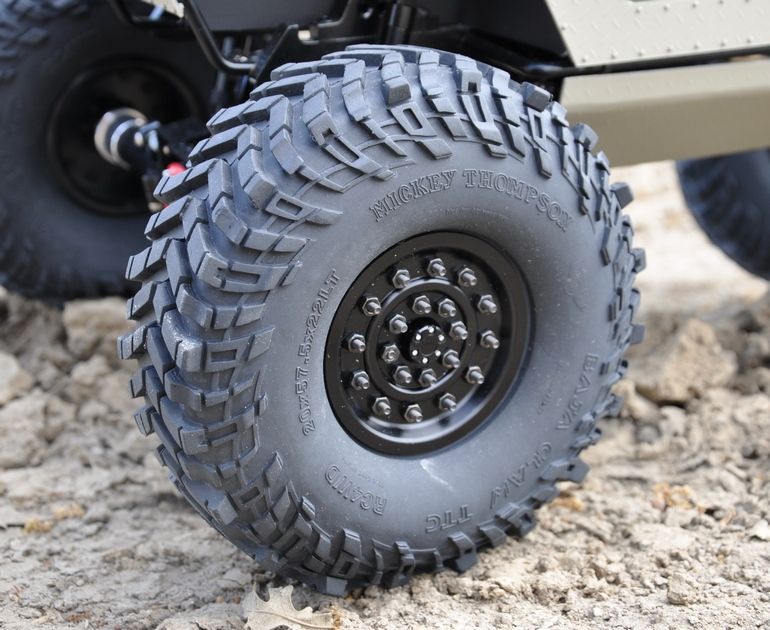 5 - shock absorbers;
5 - shock absorbers;
The caterpillar movement is carried out as follows0086 to .
Rewindable track/track chain is continuously laid in the forward direction of the vehicle on the surface of the ground support under the track rollers, creating 9 for the wheels of the machine0035 path with lower running resistance than on soft ground.
During travel, the track rises from the ground and transmits pushing force to the vehicle body.
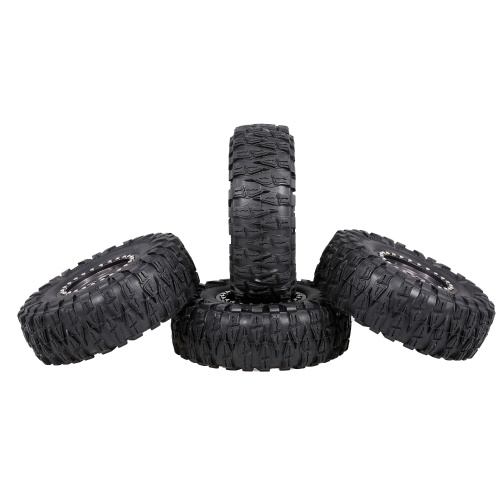
The specific pressure on the support (ground) along the length of the caterpillar is uneven - increased in the area of the drive sprockets, reduced - in the front part in the area of the idler wheel (pos. 6). The maximum pressure on the ground from the main engine is in the area of the road wheels (pos. 4).
Due to the continuous laying of the caterpillar belt under the rollers of the machine during the movement, a large area of contact of the tape with the ground is formed , significantly reducing the average pressure of the machine on the soil.
The range of average pressure on the ground of equipment with a main engine is from 11.8 to 118 kN / sq.m (from 0.12 to 1.2 kgf / sq. cm), which is significantly lower than the pressure of a human foot.
These low pressures keep the equipment from sinking into the ground, marshy soil or snow. By varying the size of the surface area in the zone of contact of the caterpillar with the support, an optimal ratio of the vehicle's cross-country ability with its traction force for towing cargo is achieved.
When equipping vehicles with caterpillar tracks, home DIYers use a conveyor belt or tires from automobile and tractor wheels.
The photo below shows the homemade all-terrain vehicle on tracks made of reinforced type conveyor belt 250 mm wide. Grousers 25 mm high are used.
Tracked all-terrain vehicle from a conveyor belt:
For most craftsmen, old tires from MTZ tractors of various models are the preferred starting materials for the manufacture of the main engine.
The main advantages of MTZ tires, as a starting material, and the tracks themselves, made from these tires, include the following factors:

Of the shortcomings of working with tractor tires, two circumstances are noted:
The illustration shows the simplest design of homemade - a cart with tracks made of tires.
Re-equipment of equipment on the main engine is carried out solely for utilitarian reasons of pragmatic owners of wheeled vehicles or motorcycles, who wished to improve the all-terrain qualities of of their "assistants".
For all models of vehicles intended for driving in the field, the market offers serial versions of industrial-made HDDs.
However, this all costs a lot of money, and tires are free or very cheap tires.
Many users of equipment manage on their own, in the conditions of a home workshop, to make caterpillars from tractor tires, install them on their machines and successfully operate in off-road conditions .
Regardless of the type of car or motorcycle, the craftsmen take into account the following factors:

When choosing the ratio of engine power and belt width of the self-made tracked installation , you can be guided by the data of price lists for all-terrain vehicles equipped with serial tracks.
Below we will consider the categories of machines that are most popular among craftsmen when converting to caterpillars.
The list of models of household vehicles and motor vehicles operating on loose snow and swampy soils is unusually wide.
The names of the machines themselves, accepted in everyday life, indicate their scope.
This is a vehicle designed to move on loose snow .
In contrast to the Anglicism "snowmobile", which means any vehicle adapted to driving on snow (aerosleighs, all-terrain vehicles on caterpillars and pneumatic wheels, etc.), in Russia only 9 are called snowmobiles0035 means of ski-caterpillar movement (rear main engine, in front - skis instead of the front wheel) with motorcycle-type controls.
For utility snowmobiles, the engine power is 30-40 hp, the track width ranges from 38 cm to 50 cm and even 60 cm. with a load, then he should be guided by these indicators.
Similar parameters must be maintained when creating the so-called snow and swamp vehicles.
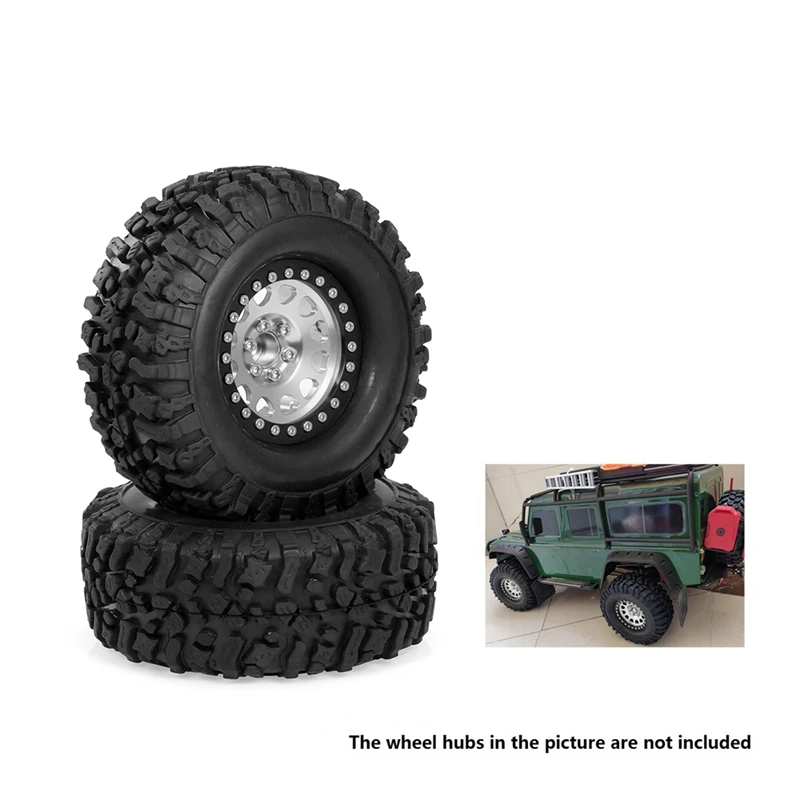
If the craftsman needs to make a faster snowmobile (like sports), then the width of the track from the tire can be reduced.
The weight load of the speeder is much lower than that of the utility truck.
Picture shows a motorcycle-based snowmobile fitted with a homemade 23 cm wide track cut from an excavator tire.
Otherwise, a homemade caterpillar for a snowmobile with your own hands is made according to the basic principle.
ATVs
In everyday life they include any vehicle capable of moving off-road and even overcome water obstacles.
There are plenty of all-terrain vehicles for industrial production:
- SUVs;
- swamps;
- amphibians;
- tracked tractors and transporters;
- ATVs;
- ATV vehicles, etc.
The cost of their is not affordable for everyone , so in home workshops they prefer to create their own exclusive products, “changing shoes” for their cars on caterpillars from tires made by themselves for an all-terrain vehicle.
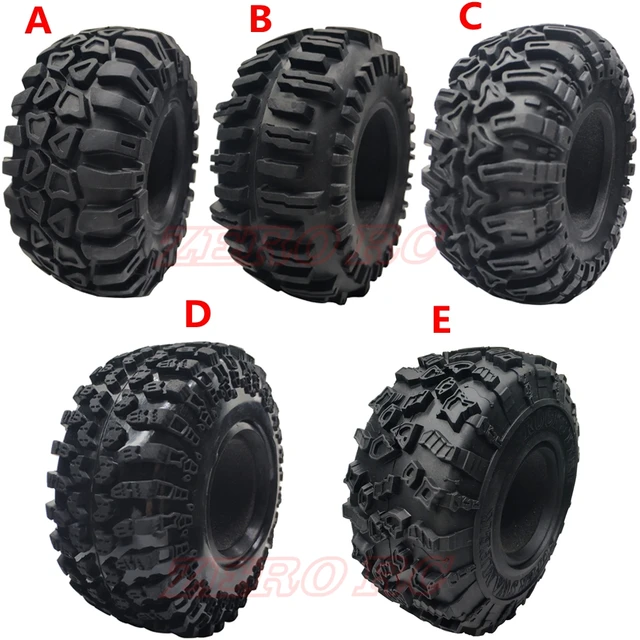
Depending on the engine power of the vehicle, wider blades can be allowed.
For self-made all-terrain vehicles with 40-70 hp engine. and a small weight load, a tape with a width of 30-40 cm .
For vehicles based on UAZ vehicles with an engine of 110-150 hp. Requires track width 40 cm with track rollers (x6) and carrier rollers (x3).
Naturally, the height of the profile of the tractor tire will not be enough to overcome the water barrier, it is necessary to install high lugs .
The figure shows an all-terrain vehicle based on the Oka vehicle with a tire track.
Motoblocks
Represented by numerous mobile units based on the single axle chassis. Home-made versions of motoblocks converted to the State Duma are widely in demand among rural residents and owners of country houses or summer cottages.
The motivation for independent re-equipment of units, bypassing the purchase of serial tracks, is obvious.
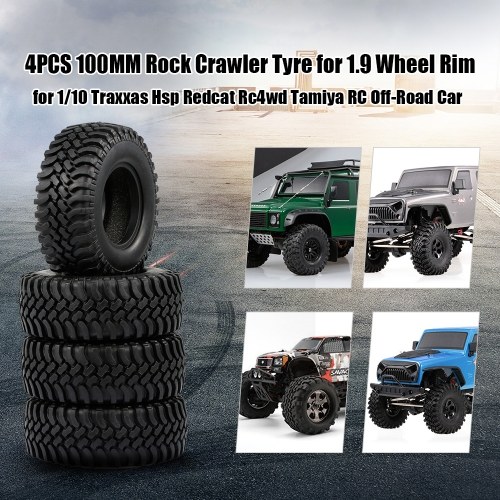
The cost of the wheeled walk-behind tractor NEVA does not exceed 1000 USD . USA, while the simplest cars adapted for driving on snow are estimated at 5-10 thousand dollars . and higher.
The drive power of the walk-behind tractor (5-8 hp) is quite enough to successfully operate as an all-weather vehicle
Motorized dogs
Motorized towing vehicles, nicknamed motorized dogs in everyday speech, are a mechanical coupling of a sled with a towing vehicle on the main engine. The driver and cargo are placed in the sleigh.
Serial models are produced in a wide range of drive power (from 6 to 30 hp) and are equipped with a rubber-metal belt drive up to 60 cm wide.
Do-it-yourselfers usually make tugs based on a 15 hp engine from improvised means, installing tracks from tires with a width of 500 mm .
Such self-made motorized dogs are capable of transporting sleds with a load of up to 700 kg, developing a speed of up to 40-50 km/h.

Most often, a homemade caterpillar for a motorized dog is made from a tire to save money.
The photo shows a self-made towing vehicle based on a walk-behind tractor.
Algorithm for making a caterpillar belt with your own hands
Caterpillar track for any model from the above categories of equipment is made from tires of various sizes, corresponding to the selected design. We will analyze step by step how to make a caterpillar from a tire.
Tape manufacturing works are unified and follow a common algorithm.
Special knowledge in the manufacture of a track from a tractor or automobile tire is not required, but certain locksmith skills are indispensable .
The process of shaping a caterpillar from an MTZ tire consists of several stages:
- A tire with a not very worn tread relief is selected.
- Cut track for the track using a sharp cobbler's knife.
Working with a sharp knife is traumatic and requires increased caution and attention.
- In order to cut rubber better, it is recommended to moisten the knife periodically with soapy water .
- Knife cutting can be successfully replaced with electric jigsaw without possible injury.
- Both sides of the tire are cut off.
- Remove excess material from the inside of the tire.
The criterion for a job well done is a straight cut without frayed edges of the resulting tape .
The track element is now ready for use:
Related video
See a homemade snowmobile tire track in action in this video:
Conclusion
Making homemade tracks to convert vehicles to crawlers is a very popular way to expand the functionality of machines at minimal cost.
